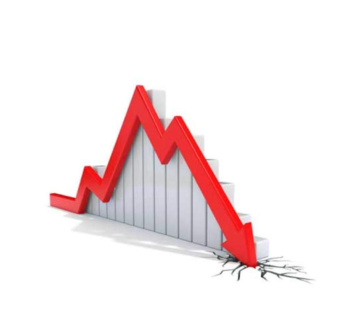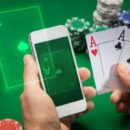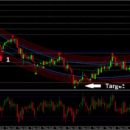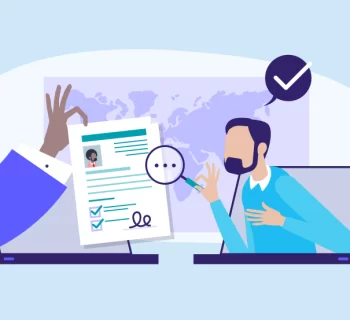Many believe that to know how to negotiate, you need to have a gift.
Well, talent certainly helps!
But, a trading technique, when used well, is effective for everyone who seeks to make a good trading.
With this in mind, we have listed in this guide 4 fully applicable and useful trading techniques for anyone looking to improve their ability to negotiate.
- Rapport
First, you need to create a connection of attunement and empathy with the other person you are trading with.
And when using a trading technique like rapport, trust reduces interpersonal tension and makes the future client more comfortable.
To use this technique, you can mirror any part of your interlocutor's behavior by adjusting your verbal and non-verbal behavior to move with them discreetly and subtly.
Below is a list of behaviors that can be mirrored:
Body movements: choose a movement that the prospective client. Be doing a lot and repeat. Example: gesturing a lot with your arms.
Vocal qualities: tone of voice, speed, volume, etc.
Breathing.
Facial expressions.
Remembering that all this must be done discreetly and subtly for the technique to be effective!
When using this trading technique, you are giving a command to the interlocutor's unconscious mind, indicating that he can trust you, because you are "alike".
- SONCAS
SONCAS is a French method that helps to identify the purchase motivation of a potential consumer that every seller must recognize to adapt his speech.
The method is an acronym for the words:
- Safety
- Proud
- Novelty
- Comfort
- Money
- Sympathy
By identifying what motivates the prospective buyer, it is possible to recognize typical customer behaviors and what arguments you should make to make him more confident.
Therefore, the use of this trading technique ends up making sales more effective, since the identification of the customer's desire is easier.
Safety
The customer wants to minimize risks.
This potential consumer asks a lot, hesitates when trading, does not want to take any risks when buying the product or service.
Also, he will ask for proofs and successful cases to prove the quality of what you are offering.
This type of customer is looking for sustainable results, brand references, and assistance.
Proud
The customer is motivated by the ego.
This is the client who dominates the meeting, likes to talk about himself, and is very self-centered.
For this type of client, the negotiator must recognize the client's achievements, offer privileges, power, and exclusivity.
Novelty
It wants things that haven't been done yet, innovation and change.
This client's behavior is dynamic - he is very spontaneous, asks a lot, and talks a lot about changes.
He seeks to find in you the transformation and change he is looking for.
Comfort
The client wants to minimize his work and seeks comfort.
He is interested in knowing what portion of work he will have, where he will have to move to, and how much it will cost.
He seeks in the negotiator someone who is a “do it all”, practical and calm.
Argent
The customer is motivated by the price.
This type of customer will seek to understand all forms of payment and will try to haggle to the maximum.
To convince this client, it is necessary to propose something that he feels is “winning”.
Sympathy
The client acts according to his emotions. This client likes to please, avoids conflicts, and likes to talk.
To deal with this client, the tip is to always be in a good mood and keep conversations pleasant and spontaneous.
- Mental Triggers
Mental triggers are guidelines that our brain adapts to avoid having to do all the work of reflection in each decision making.
Therefore, when you apply it correctly, you can engage people, motivating them to act.
Furthermore, it is not a single trading technique.
There are several types of mental triggers, but in this text, we will address which ones are essential to use to close a deal.
Shortage trigger
People tend to give more value to what is scarce.
In a trading, depending on your business, saying that there are few vacancies or few units is a type of scarcity trigger.
It is possible to show that that product or service has great demand and, therefore, if it is not purchased at the moment, it may have its delivery period extended.
Making a powerful trading technique by generating this feeling of loss, in case the deal is not closed.
Urgency trigger
The mental trigger of Urgency is very similar to that of Scarcity, but it is linked to the time factor.
Because the product or service has a deadline to be purchased.
It is a very effective trigger because one of the worst feelings for humans is the impossibility of choosing.
After the term is over, the person's only choice is to be without that product or service.
As we hate to feel powerless, we act as quickly as possible.
After all, purchasing a product and regretting it is less bad than living with the doubt about the difference it would make in your life.
To say that the agreed price will only last until next week, for example, is a type of urgency trigger.
To gain credibility and the trigger to become more effective, it is always important to explain the reason for the urgency.
Trigger of reciprocity
Offer something that the customer sees value, like a free sample, a trial period, or content from your blog.
This trading technique is very powerful, as it activates in the client the feeling that he needs to return the favor to you in some way.
Authority trigger
Transmit the idea that you are an authority in your niche.
To use this trading technique, present success stories from past customers to show the results you have already brought to other companies.
- Spin Selling
This trading technique, created by Neil Rackham, is based on how to ask the right questions to increase the chances of a successful trading.
This sales process maps 4 types of questions that, when asked in sequence, will make the trading more susceptible to work.
This trading technique became known as SPIN due to the following initials:
Situation
Situation questions form the initial stage of your position about the conversation.
Questioning what the situation is in your client gives you an understanding of the context in which he is inserted.
Such information can be used to guide the beginning of the relationship correctly.
This requires you to be prepared to understand the market and know your customer's product/service.
Otherwise, you lose credibility.
Therefore, the key to success with situation questions is to do some research before the meeting.
Asking this type of question is what will make you the correct diagnosis of the client's situation.
Examples of situational questions:
How many employees do you have?
What type of equipment do you use?
How do you manage your customers' contact details?
Problem
When you can get the buyer to identify a problem that needs to be fixed, you are more likely to attract the attention needed to close the sale.
Problem issues aim precisely to identify the factor that is creating the client's pain and to encourage the person with whom they are trading to identify a problem not yet perceived.
Examples of problem questions:
Is your current machinery difficult to use?
Are you satisfied with your process….?
What is the biggest challenge you are facing to manage your sales?
Do you find it expensive to use the software you use to manage your sales team?
Implication
The purpose of this third question step is to make the buyer anxious for a solution to a problem he has identified.
Implicit questions asked intelligently and subtly make it possible for the prospective client to identify - for himself - the effects, consequences, and impacts that the problem can generate if unsolved.
To encourage the buyer to consider your solution, you must make sure that he sees clearly how serious his problem is, aligning it with what you are proposing in the trading.
Examples of implicit questions:
How will this problem slow your growth?
What are the effects of this problem on the output of your business?
If you are not generating enough leads for your CRM, what is the impact on your sales team?
This step leads the buyer to understand his value proposition more broadly and helps him, in general, to approach the closing
Need-payoff
The final step aims to make the potential customer realize how valuable the solution you are offering in this trading is.
You need to ensure the benefits of what you are selling and encourage the consumer to commit to the solution being offered.
Conclusion
When using an effective trading technique, the chances of closing a contract increase significantly.





















